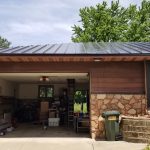The Colorado River’s two great reservoirs, Lake Mead and Lake Powell, are in retreat. Multi-year droughts and chronic overuse have taken their toll, to be sure, but vast quantities of water are also lost to evaporation. What if the same scorching sun that causes so much of this water loss were harnessed for electric power?
Installing floating solar photovoltaic arrays, sometimes called “floatovoltaics,” on a portion of these two reservoirs in the southwestern United States could produce clean, renewable energy while shielding significant expanses of water from the hot desert sun.
The dual energy and environmental benefits of floating solar arrays are already beginning to earn the technology a place in the global clean energy marketplace, with floatovoltaic projects now being built in places as diverse as Australia, Brazil, China, England, India, Japan, South Korea, and California. And nowhere could they prove as effective as on lakes Mead and Powell, the two largest man-made reservoirs in the US.
The US Bureau of Reclamation estimates that 800,000 acre-feet of water – nearly six percent of the Colorado River’s annual flow – is baked off Lake Mead’s surface by the searing desert sun during an average year. Lake Powell loses about 860,000 acre-feet annually to evaporation and bank seepage. Since floatovoltaics can reduce evaporation in dry climates by as much as 90%, covering portions of these two water bodies with solar panels could result in significant water savings.
Extrapolating from the spatial needs of floating solar farms already built or designed, the electricity gains from installing floatovoltaics on just a fraction of these man-made desert lakes could be momentous. If six percent of Lake Mead’s surface were devoted to solar power, the yield would be at least 3,400 megawatts of electric-generating capacity – substantially more than the Hoover Dam’sgenerating capacity of 2,074 megawatts.
This solar infusion could give the power-hungry Southwest a major boost in renewable electricity, and at least some of that power could piggyback on underused transmission lines built for the Hoover Dam.
A key selling point of floatovoltaics is the extra energy punch they deliver when compared to terrestrial photovoltaics in a similar climate. Hovering just above sun-shaded lake water, the floating photovoltaic panels would operate at cooler temperatures than solar arrays on desert land – a key factor in improving the productivity of semiconductors, including PV cells. One project proponent expects a 50% boost in electricity per watt of installed power from her company’s planned solar arrays at a sun-saturated sewage treatment pond in Jamestown, South Australia.





